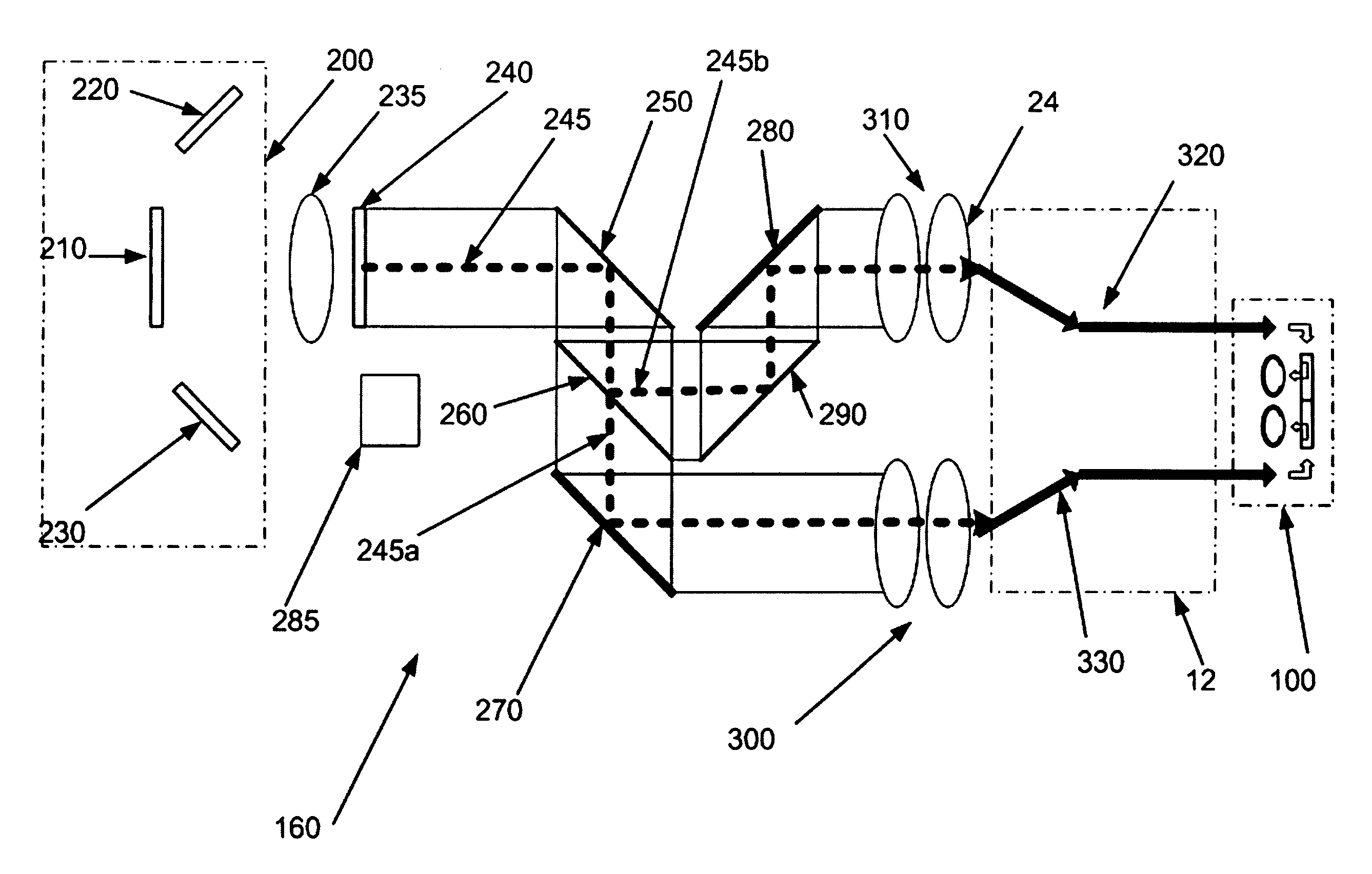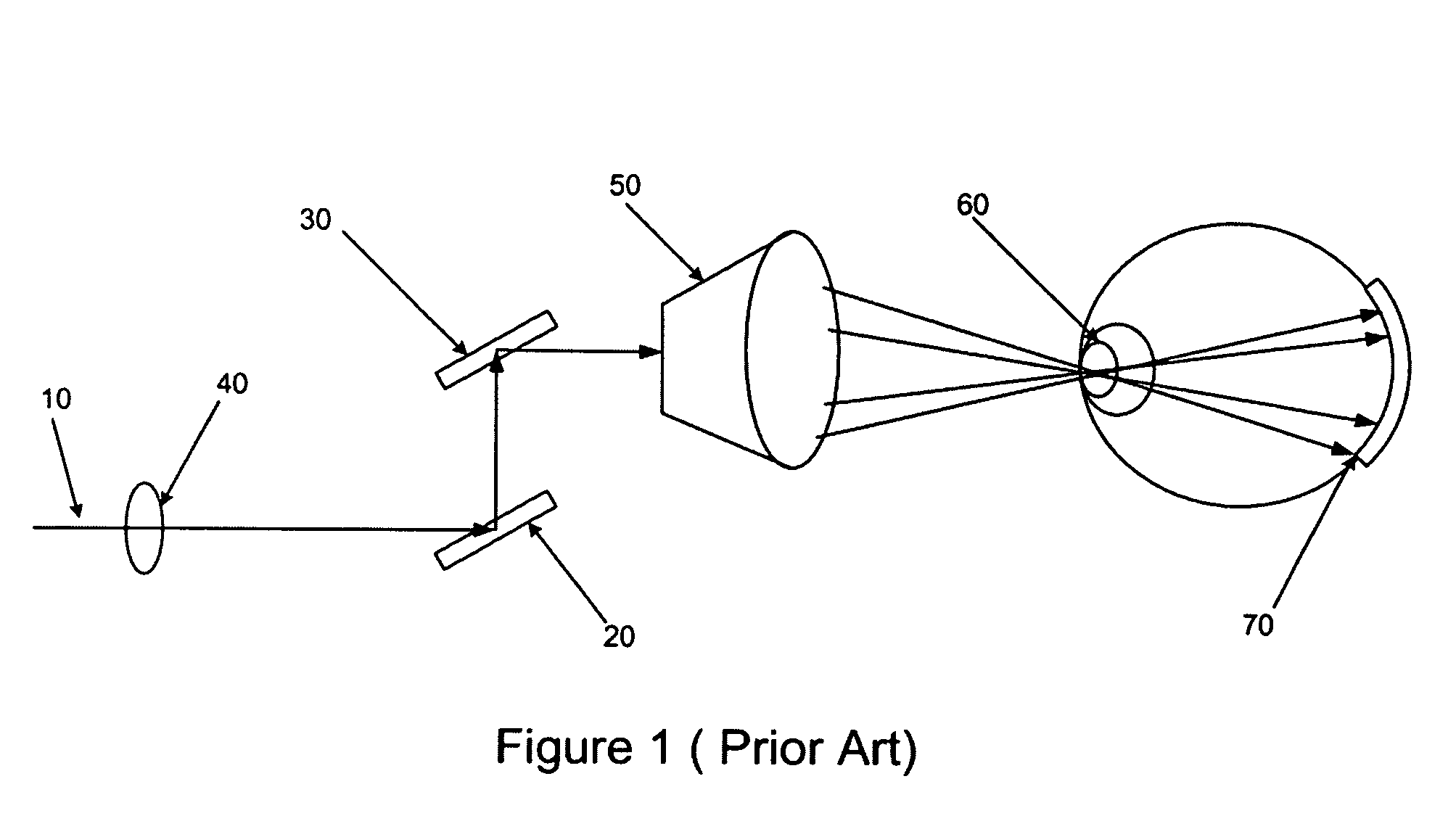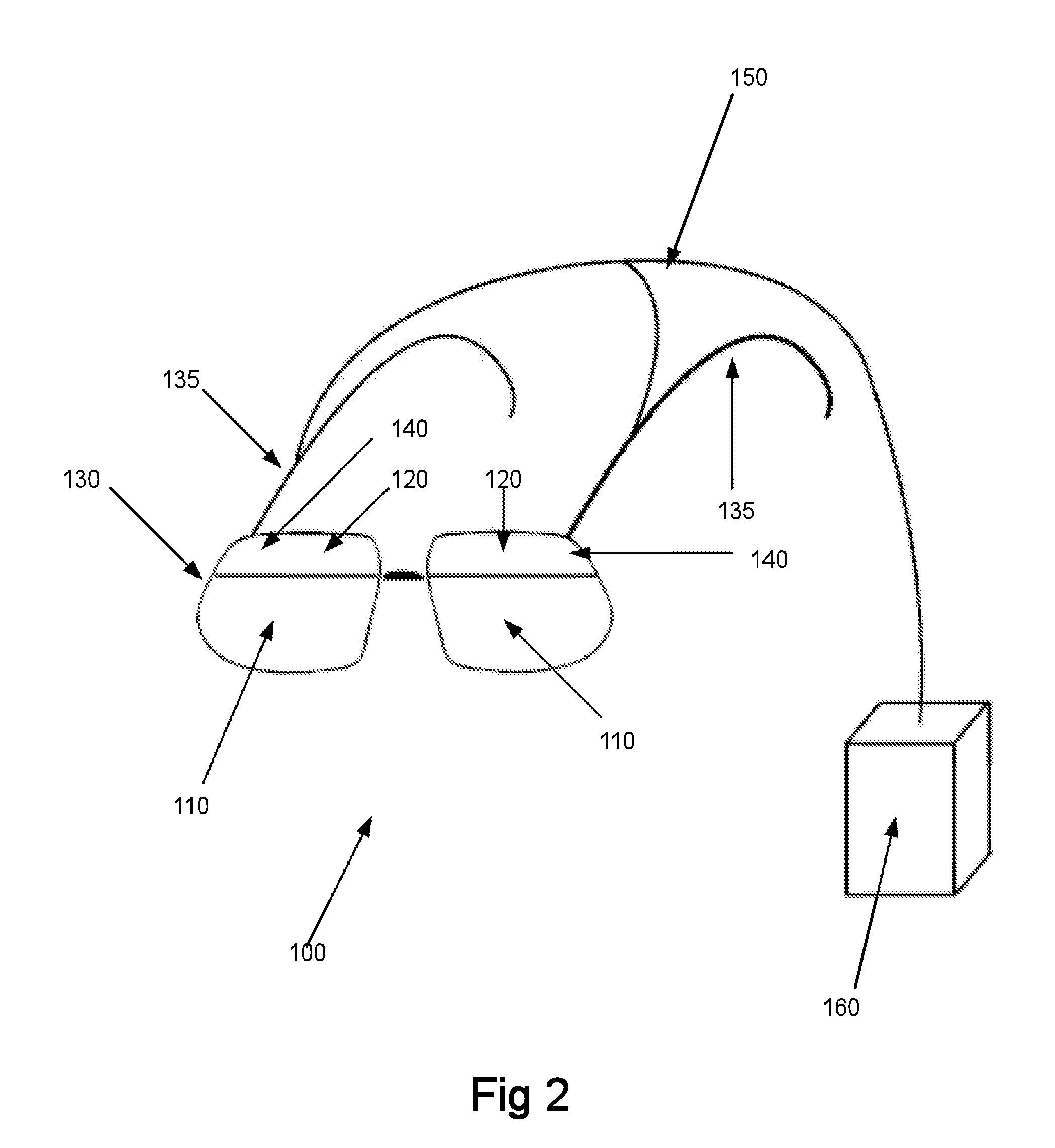Head mountable video display
a display and head technology, applied in the field of direct retinal image projection, can solve the problems of eye strain, disorientation and confusion, and achieve the effect of high quality and convenient modulation of each rgb beam
- Summary
- Abstract
- Description
- Claims
- Application Information
AI Technical Summary
Benefits of technology
Problems solved by technology
Method used
Image
Examples
Embodiment Construction
[0023]Referring to FIG. 1, a pictorial and block diagram is shown of a typical, prior art system that utilized a modulated low-power photon source 1 that is controllable both horizontally 3 and vertically 4. The modulated photon source is focused through an achromatic focusing lens 2 before it reaches the horizontal scanning mirror 3. With this approach, the process that controls the signal that paints the images onto the retina 7 is similar to that of a classic TV CRT, but the process uses photons and not electrons. The light beam's final pass bounces off a small reflecting surface 5 before entering the lens of the eye 6 and imaging onto the retina 7. To obtain color with this approach, three separate lasers are used, each with the desired red, green, blue wavelengths. Variations to this legacy approach are to utilize a miniature, low resolution CRT or liquid crystal display panel that is mounted in front of one or both of the eyes. As the size of the display with this methodology ...
PUM
 Login to View More
Login to View More Abstract
Description
Claims
Application Information
 Login to View More
Login to View More - R&D
- Intellectual Property
- Life Sciences
- Materials
- Tech Scout
- Unparalleled Data Quality
- Higher Quality Content
- 60% Fewer Hallucinations
Browse by: Latest US Patents, China's latest patents, Technical Efficacy Thesaurus, Application Domain, Technology Topic, Popular Technical Reports.
© 2025 PatSnap. All rights reserved.Legal|Privacy policy|Modern Slavery Act Transparency Statement|Sitemap|About US| Contact US: help@patsnap.com



